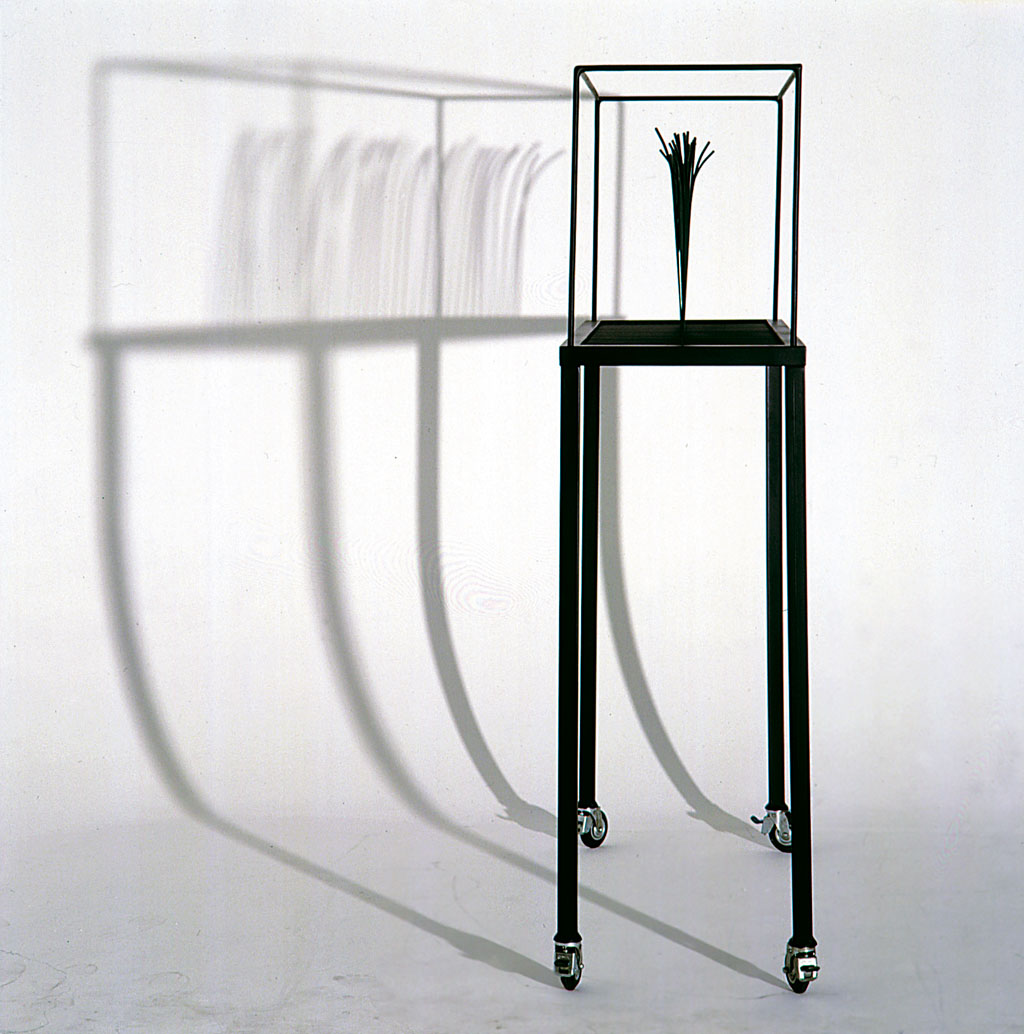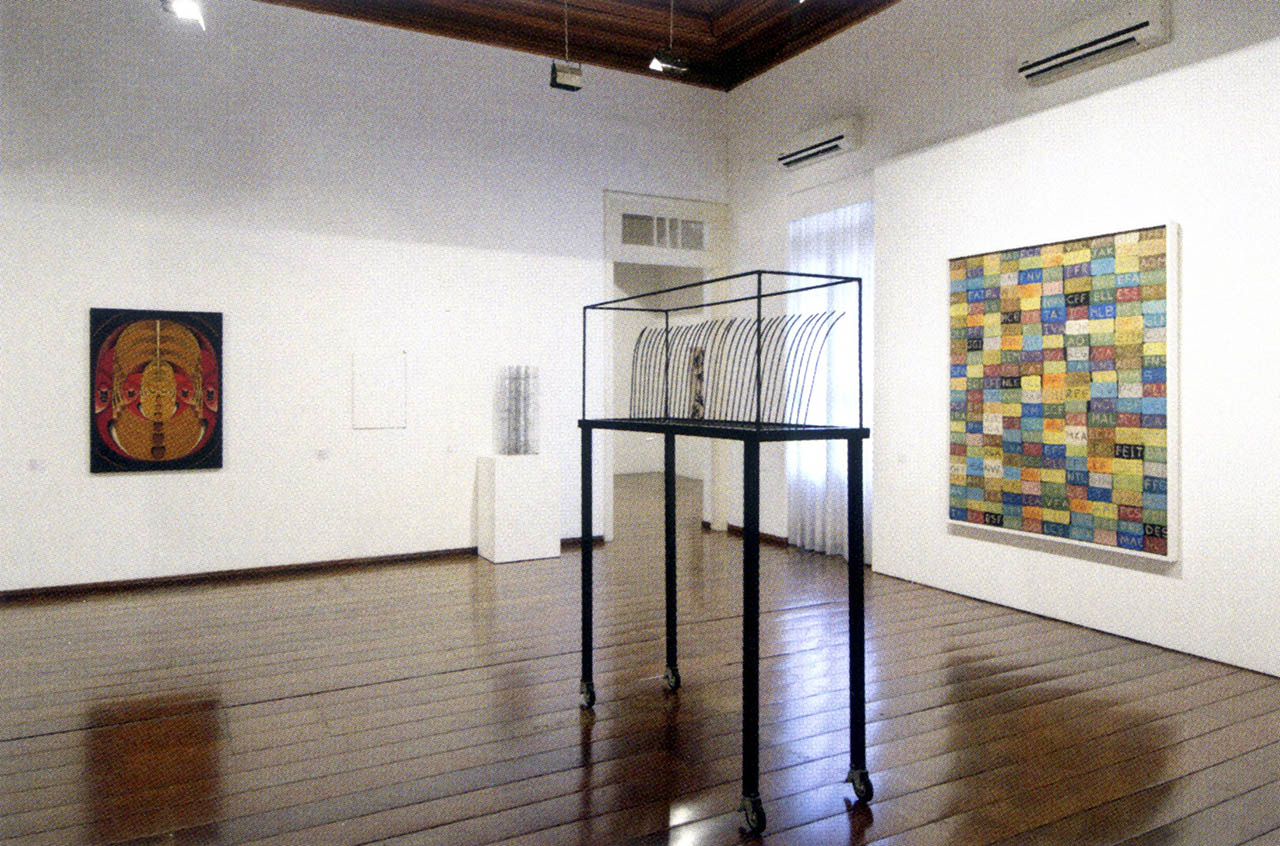[português]
A obra Aquário, pertencente à série Mesas, é formada por esculturas que são plataformas suspensas por pernas alongadas com rodas industriais, à altura média do olhar. Sobre essas plataformas foram organizados tarugos de alumínio anodizado em diversas configurações sugestivas. Segundo a artista, a obra é constituída como um lugar que mantém o observador à distância, para inviabilizar a experiência física sugerida e privilegiar apenas a fruição através do olhar. Pretendia-se aqui estabelecer o contraste entre as referências do universo objetivo do espectador, evidenciado na escultura pela forma de objeto utilitário (a mesa com rodas) e um outro universo, mais subjetivo, emoldurado e ativado por filetes de alumínio que remetiam ao desenho. Porém, é importante ressaltar que, na série mesas, as rodas cumpriam um papel de grande importância na medida em que sugeriam, mesmo que metaforicamente, o suposto deslocamento do desenho mural para o espaço real.
[inglês]
The work Aquário, belonging to the Mesas series, is formed by sculptures that are platforms suspended by elongated legs with industrial wheels, at the average height of the eye. Anodized aluminum billets were arranged on these platforms in various suggestive configurations. According to the artist, the work is constituted as a place that keeps the observer at a distance, to make the suggested physical experience unfeasible and to privilege only enjoyment through the gaze. It was intended here to establish a contrast between the references of the spectator's objective universe, evidenced in the sculpture by the form of a utilitarian object (the table with wheels) and another, more subjective universe, framed and activated by aluminum fillets that referred to the drawing. However, it is important to point out that, in the mesa series, the wheels played a very important role insofar as they suggested, even if metaphorically, the supposed displacement of the mural design to the real space.
Ana Maria Tavares, 2000
 Aquário, 1989. Vista da exposição "Arte Híbrida", na Galeria Rodrigo Mello Franco de Andrade, Rio de Janeiro, 1989. Créditos: Eduardo Brandão.
Aquário, 1989. Vista da exposição "Arte Híbrida", na Galeria Rodrigo Mello Franco de Andrade, Rio de Janeiro, 1989. Créditos: Eduardo Brandão. 
 Vista da exposição do acervo do MARP - Museu de Arte de Ribeirão Preto, 2015
Vista da exposição do acervo do MARP - Museu de Arte de Ribeirão Preto, 2015 Aquário, 1989. Vista da exposição "Arte Híbrida", na Galeria Rodrigo Mello Franco de Andrade, Rio de Janeiro, 1989. Créditos: Eduardo Brandão.
Aquário, 1989. Vista da exposição "Arte Híbrida", na Galeria Rodrigo Mello Franco de Andrade, Rio de Janeiro, 1989. Créditos: Eduardo Brandão. 
 Vista da exposição do acervo do MARP - Museu de Arte de Ribeirão Preto, 2015
Vista da exposição do acervo do MARP - Museu de Arte de Ribeirão Preto, 2015